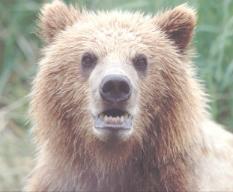
It seems like more and more we are hearing about and dealing with human-wildlife conflicts which in many cases are more about conflicts between humans than about wildlife. As part of my job with the Grizzly Bear Outreach Project (GBOP) and my job as a zoo keeper this topic comes up a lot. Dealing with this topic can be touchy so I was very excited to hear about a course that teaches about conflict dynamics and how to address them.
I attended the Conservation and Conflict Experiential Training course taught by staff of the Human Wildlife Conflict Collaboration (HWCC). The course was held September 9-11 2009 in Washington, D.C. Our class had people from the US, Wales, France and Africa. It was a great mix of people with varied backgrounds; grad students, the Humane Society, Defenders of Wildlife, Wildlife Conservation Society, USDA and the National Park Service etc. Having this mix of people really brought in some great ideas and information exchange which added to the wonderful learning experience of the class.

This is not a sit, take notes and listen to the instructors’ course. There are a lot of discussions and role play; the more you participate the more you get out of it.
”The objective of this course is to improve the ability of conservation practitioners to understand conflict dynamics and establish more effective ways to address them. Participants will accomplish this by drawing on tools, processes, and theory developed in the field of conflict resolution that have shown to be applicable to conservation realities. As a result, conservation practitioners will possess a broader set of skills to ensure that conservation solutions are more successful and sustainable.” (HWCC)
We practiced various roles: being a third party neutral, an observer and people involved in a conflict. Playing these different “characters” and being in someone else’s shoes brought a new perspective to the process and gave a glimpse into how the other side may be feeling. At the end of each role play the groups (usually made up of 4 people) would critique the people doing the role play providing constructive criticism and positive feedback. It was a safe environment to practice the new skills we were learning each day and to improve on the ones we already had.

I would recommend this course to anyone that has to deal with human-wildlife conflict; it really does provide tools and guidance to prevent or resolve conflict issues. As someone who has never been good at dealing with human conflict, I left the course feeling like I can go out accomplish my goals and when conflicts arise I can handle them.
For more information on HWCC and the training course go to their website: http://www.humanwildlifeconflict.org/Training.htm
Submitted by Wendy Gardner, photo credits: Joe Milmoe




